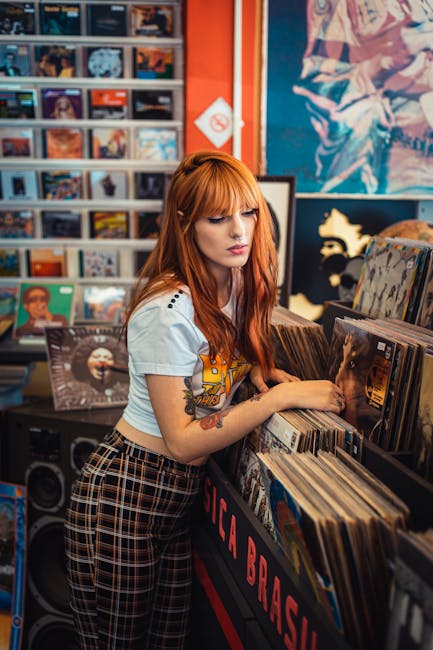A Rhythmic Journey Through Zydeco’s History
Zydeco music, a vibrant and infectious genre born from the heart of Louisiana, is far more than just catchy tunes; it’s a cultural tapestry woven with threads of French Creole heritage, African rhythms, and a resilient spirit. This deep dive will explore its origins, evolution, key instruments, influential artists, and its enduring legacy in American music. We’ll uncover the stories behind the music, delving into the rich history and cultural significance that makes Zydeco such a unique and compelling genre.
From the Fields to the Festivals: The Roots of Zydeco
Understanding Zydeco requires understanding its origins in the Louisiana bayous and prairies. Emerging from the Creole communities of southwest Louisiana in the early 20th century, it evolved from a musical tradition known as la la, a style characterized by accordion-led melodies and strong rhythmic elements. These communities, largely composed of French-speaking African Americans, faced economic hardship and social marginalization, and their music served as an outlet for their experiences, struggles, and celebrations. The accordion, a key instrument of French Creole music, became the central voice of this new genre, its bellows mirroring the breath and pulse of the community itself.
The term “Zydeco” itself is believed to have originated from the French words les haricots, meaning “the beans.” This likely reflects the economic realities of the time, where beans were a staple food for many. This humble origin underscores the down-to-earth nature of the music, a genre born not in grand halls, but in the fields, juke joints, and homes of the people.
The Instruments that Define Zydeco
While the accordion is undoubtedly the king of Zydeco, the genre’s distinctive sound is a collaborative effort. Let’s explore the instrumental backbone:
- Accordion: The diatonic button accordion is the heart and soul of Zydeco. Its bright, energetic sound provides the melodic foundation, often carrying the lead vocals.
- Fiddle: Often playing in harmony with or counterpoint to the accordion, the fiddle adds a layer of high-energy excitement. Its nimble playing complements the accordion’s driving rhythms.
- Rubboard (Frottoir): This unique percussion instrument, often played by scraping a metal washboard with thimbles or coins, provides a rhythmic foundation and distinctive percussive texture. The raw, percussive sound is distinctly Zydeco.
- Bass: Whether upright bass, electric bass, or even a simple kick drum, the bass provides a sturdy rhythmic anchor that grounds the music’s energetic drive.
- Drums: More contemporary Zydeco bands often incorporate drums, adding a powerful and contemporary beat to the mix.
Key Figures in Zydeco’s Evolution
Zydeco’s rich history is defined by a number of iconic artists who helped shape and popularize the genre. Their contributions have been pivotal in its growth and global recognition:
- Clifton Chenier: Often called the “King of Zydeco,” Chenier played a crucial role in bringing Zydeco to a wider audience. His innovative style and charismatic stage presence solidified the genre’s place in Louisiana music.
- Boozoo Chavis: A master of the rubboard and a singer with a uniquely rough and gritty voice, Chavis’s style was marked by raw emotion and an unbridled energy.
- John Delafose: Known for his sophisticated musical arrangements and his ability to blend traditional Zydeco elements with more modern influences, Delafose broadened the genre’s appeal.
- Cedric Watson: A younger generation artist, Watson exemplifies the evolution of Zydeco. He seamlessly blends traditional elements with modern sounds, showcasing its adaptability and continued relevance.
- Nathan Williams: A vibrant and versatile Zydeco musician, Williams maintains the tradition while also pushing creative boundaries.
The Influence of Other Genres
Zydeco’s unique character isn’t confined to its core elements. It’s a melting pot of influences, absorbing and adapting elements from other musical styles. Blues, R&B, and even a touch of Cajun music have contributed to its diverse sound. This fluidity highlights the genre’s adaptability and its ability to evolve while retaining its core identity.
Zydeco’s Enduring Legacy
Zydeco music has transcended its regional origins, becoming a celebrated genre with a dedicated following both nationally and internationally. Its infectious rhythms and uplifting energy continue to resonate with audiences of all backgrounds. From the lively dance floors of Louisiana festivals to global stages, Zydeco’s vibrant energy continues to captivate listeners.
Zydeco Today: A Genre that Continues to Evolve
The genre remains dynamic, with contemporary artists constantly pushing boundaries and experimenting with new sounds while preserving the heart and soul of its traditions. This shows the adaptability of Zydeco, its ability to resonate with new generations, and its capacity to continue as a living, breathing tradition.
Experiencing the Zydeco Culture
To truly appreciate Zydeco, one must experience it live. The energy of a Zydeco dance is infectious, a testament to the music’s power to unite people through rhythm and joy. Attending a Zydeco festival or concert provides an unforgettable glimpse into the rich cultural heritage of Louisiana.
Beyond the Music: The Culture of Zydeco
The music is inextricably linked to the cultural identity of the Louisiana Creole people. It’s a powerful symbol of resilience, community, and a unique blend of cultural influences. Understanding the cultural context deepens the appreciation for the music itself.
Conclusion: A Celebration of Sound and Spirit
Zydeco music is more than just a collection of songs; it’s a vibrant testament to a community’s history, resilience, and joyful spirit. From its humble beginnings in the Louisiana bayous to its global recognition, Zydeco’s journey is a celebration of music’s power to connect, inspire, and uplift. Its enduring legacy ensures that this unique and compelling genre will continue to resonate for generations to come.

